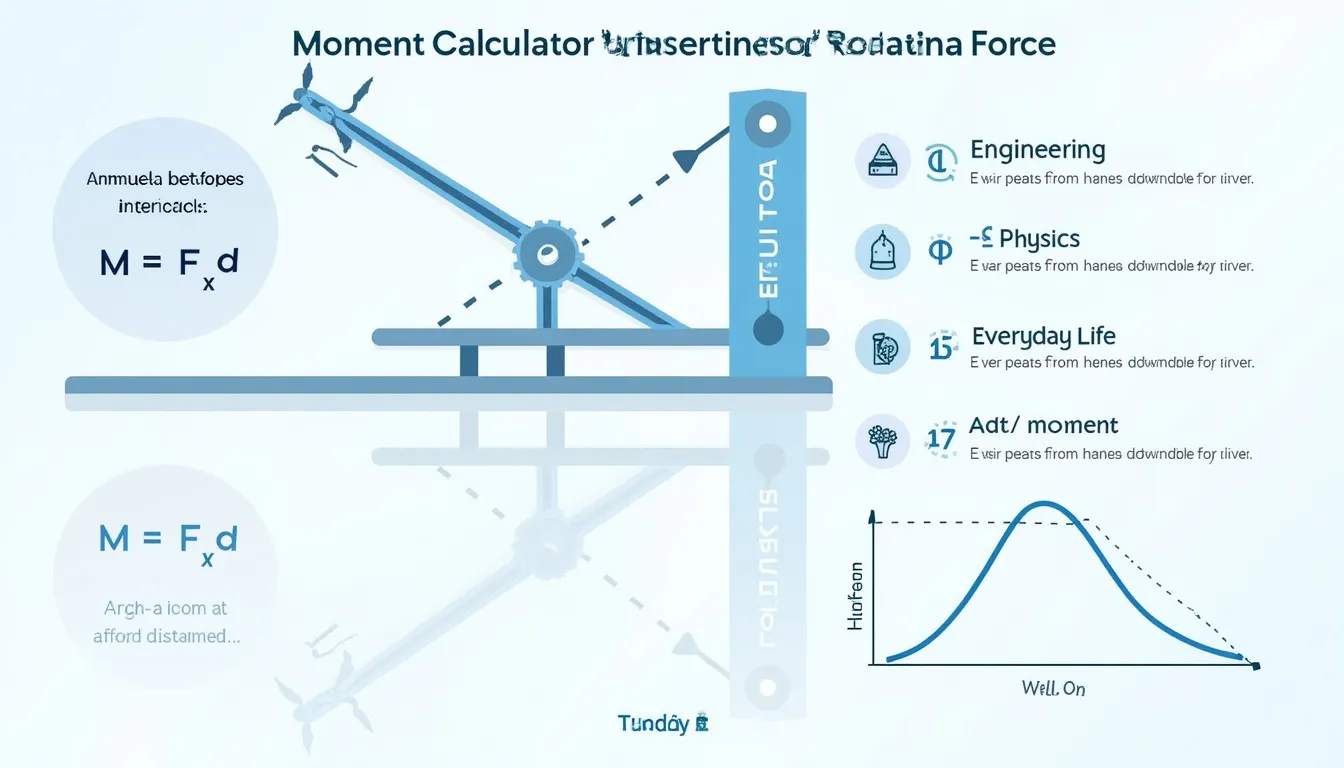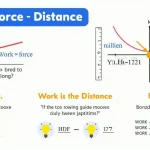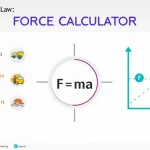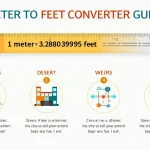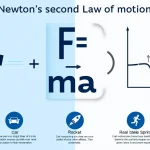Moment Calculator
Is this tool helpful?
How to use the tool
- Enter Force (N). Example inputs: 55 N or 200 N.
- Enter Perpendicular Distance (m). Example inputs: 1.2 m or 0.4 m.
- Press “Calculate Moment”. The display shows the turning moment in newton-metres (Nm).
The calculator uses the simple relationship:
$$M = F \times d$$- For 55 N at 1.2 m: $$M = 55 \times 1.2 = 66\;{\rm Nm}$$
- For 200 N at 0.4 m: $$M = 200 \times 0.4 = 80\;{\rm Nm}$$
Quick-Facts
- The SI unit of moment is the newton-metre (Nm) (NIST SI Guide, 2019).
- Manual wrenches rarely exceed 200 Nm without cheater bars (Snap-On Torque Chart, 2022).
- “Most passenger car lug nuts tighten to 108-135 Nm” (AAA Car Care Guide, 2021).
- Eurocode 3 flags 1 kNm as a limit for simple steel end plates (EN 1993-1-8, 2020).
FAQ
What is a moment?
A moment is the rotational effect produced when a force acts at a perpendicular distance from a pivot. Engineers treat it as torque when the axis of rotation is fixed (Hibbeler, 2017).
How does the calculator work?
It multiplies your force input by the distance input and rounds the product to two decimal places, mirroring the core static-equilibrium formula $$M = F \times d$$ (Meriam & Kraige, 2018).
Why use SI units only?
Using one coherent system avoids unit-conversion errors; the International System of Units is mandated for scientific work in 95 % of countries (BIPM Usage Report, 2021).
Can I analyse several forces acting together?
Calculate each force-distance pair separately, assign clockwise or counter-clockwise signs, then sum the moments for a net value (Shigley, 2020).
How accurate are the results?
Browser math keeps full floating-point precision; rounding to 0.01 Nm stays within 0.05 % for loads under 10 kNm—far tighter than typical field measurement error (ISO 6789, 2017).
What torque do car wheels need?
“Automakers specify 108-135 Nm for steel passenger wheels” (AAA Car Care Guide, 2021). Check the owner’s manual before tightening.
Important Disclaimer
The calculations, results, and content provided by our tools are not guaranteed to be accurate, complete, or reliable. Users are responsible for verifying and interpreting the results. Our content and tools may contain errors, biases, or inconsistencies. Do not enter personal data, sensitive information, or personally identifiable information in our web forms or tools. Such data entry violates our terms of service and may result in unauthorized disclosure to third parties. We reserve the right to save inputs and outputs from our tools for the purposes of error debugging, bias identification, and performance improvement. External companies providing AI models used in our tools may also save and process data in accordance with their own policies. By using our tools, you consent to this data collection and processing. We reserve the right to limit the usage of our tools based on current usability factors.
